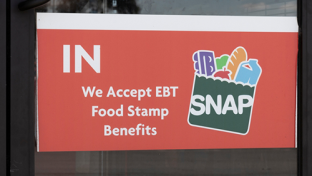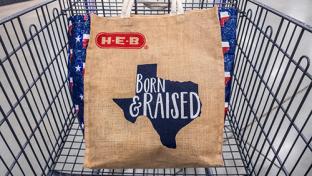Amazon, H-E-B, Costco, Sam’s Club and Walmart Best Positioned for Future: Report

Customer data science firm dunnhumby has released a special report examining the trends that will have the biggest potential impact on grocery retailers over the next three decades, which retailers are best positioned, and which ones must evolve to meet future trends. According to “Grocery 2053: A Data-Driven Gaze Into the Future,” Amazon, H-E-B, Costco, Sam’s Club and Walmart are among those best positioned for 2053, when the U.S. grocery retail industry will be worth $1.9 trillion, more than double its current size.
In the report, dunnhumby included the largest 35 U.S. retailers in the conventional, mass, club, specialty, discounter, drug and dollar channels. The firm identified 15 subtrends affecting the grocery industry and then grouped these into mega or macro trends that will have the biggest impact. The report made use of the dunnhumby Retailer Preference Index database, which contains more than 70,000 consumer survey responses collected 2017-2022, to understand which trends are most important to consumers. Retailers were then evaluated for 2053 based on their future expected customer base, the trends relevant to them and the value proposition alignment required.
[Read More: “Which Grocers Are Winning in Today’s High-Price Environment?”]
“While the shifts the retail grocery industry have gone through over the last three and a half years have been quite dramatic, the reality is that consequential shifts unfold over decades,” said Matt O’Grady, president of the Americas for Chicago-based dunnhumby. “It isn’t one five-year period in grocery history that will change the fortunes of retailers. Rather, grocers will rise or fall based on their ability to align themselves to the dominant demographic, cultural, economic and technological trends that will slowly reshape the market context over decades to come. The aim of our report is to help retailers understand what shopper values … will shape the decades to come, and offer a framework of how to transform their organizations over time.”
Key findings from the study include the following:
- Gens Y (born 1981-1996) and Z (born 1997-2012) will be central to how the market evolves over the next three decades. More than any other age groups, these have been traumatized by both the Great Recession and the pandemic and how those two periods influenced their views of their personal finances.
- Fiscal conservatism (concern about the economy as well as personal finances) is the biggest source of stress for consumers and the most important overarching trend that will continue to affect consumers over the next three decades. Only when income surpasses $150,000 annually do finances gain parity with health and the environment as sources of stress for consumers. Also, the younger the consumers, the more they tend to be stressed by finances, both long-term and day-to-day.
- Health and wellness (2), Data 3.0 (the adoption of new technology) (3), values-based consumption (4) and channel proliferation (5) follow fiscal conservatism as the second through fifth most important trends of the future. CVS topped all retailers for health and wellness, followed by Amazon, H-E-B, Rite Aid, Walgreens, Costco, Walmart, Fry’s, Kroger and Meijer. Amazon was the top store for Data 3.0, values-based consumption and channel proliferation.
- Health and wellness and finances are opposing forces for many consumers. While 80% of consumers want to choose healthier foods when shopping, price is an obstacle for 60% of them. Consumers with higher incomes are more likely to regularly choose healthy foods when shopping. Younger customers care more about their mental health, while older customers care about their physical health.
- Data 3.0 is still nominal, but it greatly appeals to younger generations. Winning the hearts and wallets of future post-Millennial demographics will happen not only by offering self-checkout lanes (used by four out of every five customers) but also by integrating new holistic virtual tech into purchases and communications.
- Values-based consumption remains aspirational and ranks last when customers are asked to trade off with other needs such as finances and personal health. As with health and wellness, needs that are less personal and less immediate to the consumer take a back seat until the priorities (like finances) are met.
Walmart, Amazon, Costco, Sam’s Club and H-E-B are Nos. 1, 2, 3, 8 and 15, respectively, on The PG 100, Progressive Grocer’s 2023 list of the top food and consumables retailers in North America, while Kroger (including Fry’s), Walgreens, CVS, Rite Aid and Meijer rank fourth, fifth, seventh, 22nd and 23rd, respectively, on PG’s list.







